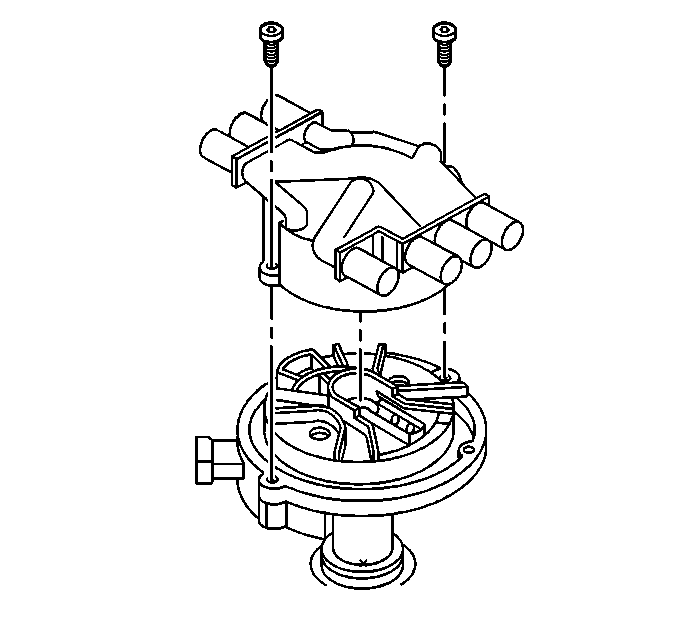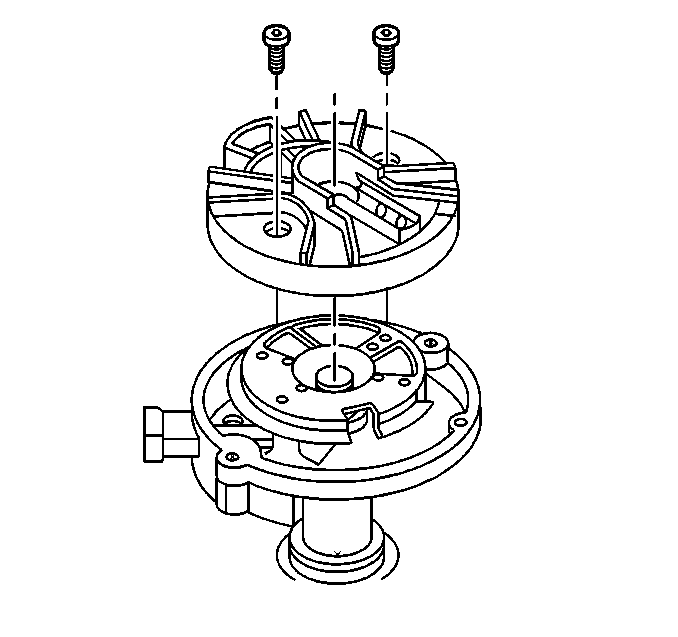Important: Discoloration of the distributor cap and some whitish build up around the cap
terminals is normal. Yellowing of the cap, darkening and some carbon build up under
the rotor segment is normal. Replacement of the cap and rotor is not necessary unless
there is a driveability concern.

- Inspect the distributor cap for cracks,
tiny holes or carbon tracks between the cap terminal traces. Diagnose the carbon
tracks using the following procedure:
| 1.1. | Remove the spark plug wires from the distributor cap. |
| 1.1.1. | Twist each spark plug boot 1/2 turn. |
| 1.1.2. | Pull only on the wire boot in order to remove the wire from the cap. |
| 1.2. | Disconnect the electrical connector from the base of the distributor. |
| 1.3. | Remove the distributor cap screws and cap. |
| 1.4. | Place 1 lead from the digital multimeter (DMM) on a cap terminal. |
| 1.5. | Use the other lead in order to probe all other terminals and the center
carbon ball. |
| 1.6. | Move the base lead to the next terminal. Probe all other leads. |
| 1.7. | Continue this procedure until you test all the secondary terminals. |
| 1.8. | If there are any non-infinite readings, replace the cap. |

- Inspect the cap for excess build-up of corrosion
on the terminals. Scrape clean the terminals. Replace the cap if the corrosion is
excessive. Some buildup is normal
- Inspect the rotor segment for excess wear. Replace the rotor if excess
looseness in the rotor segment is present.
- Inspect the shaft for shaft-to-bushing looseness:
| 4.1. | Inspect the housing for cracks or damage. |
| 4.2. | Insert the shaft in the housing. |
| 4.3. | If the shaft wobbles, replace the housing. |


